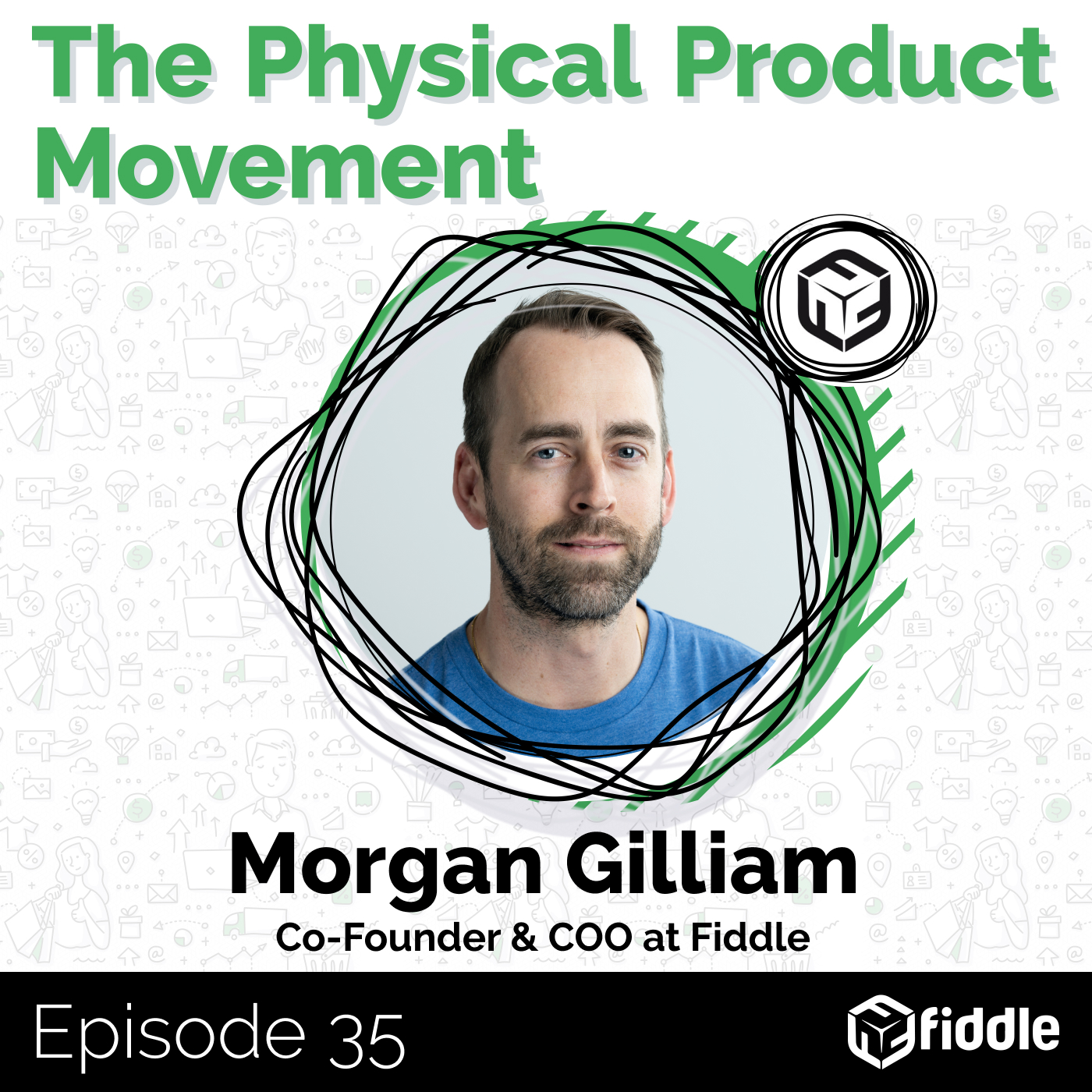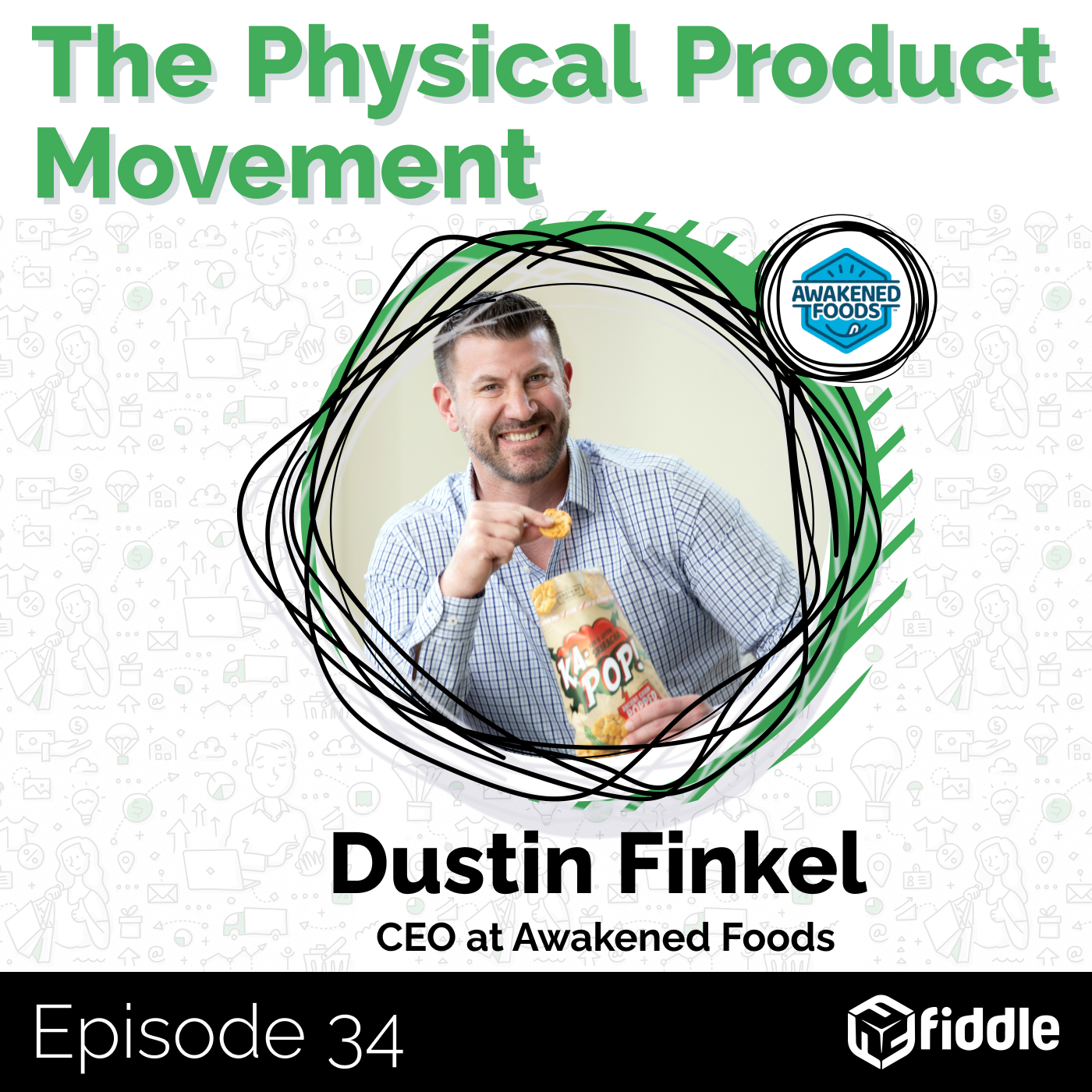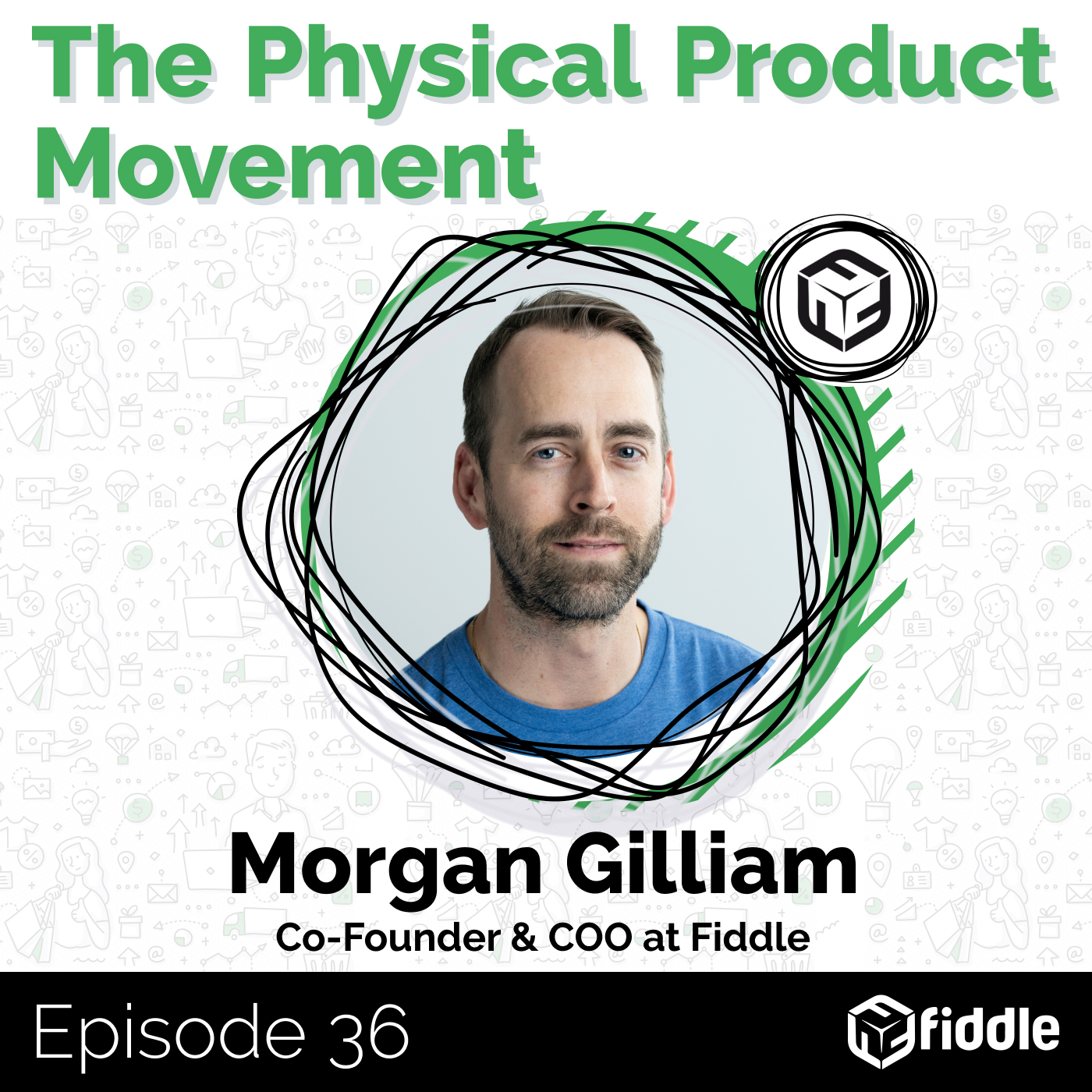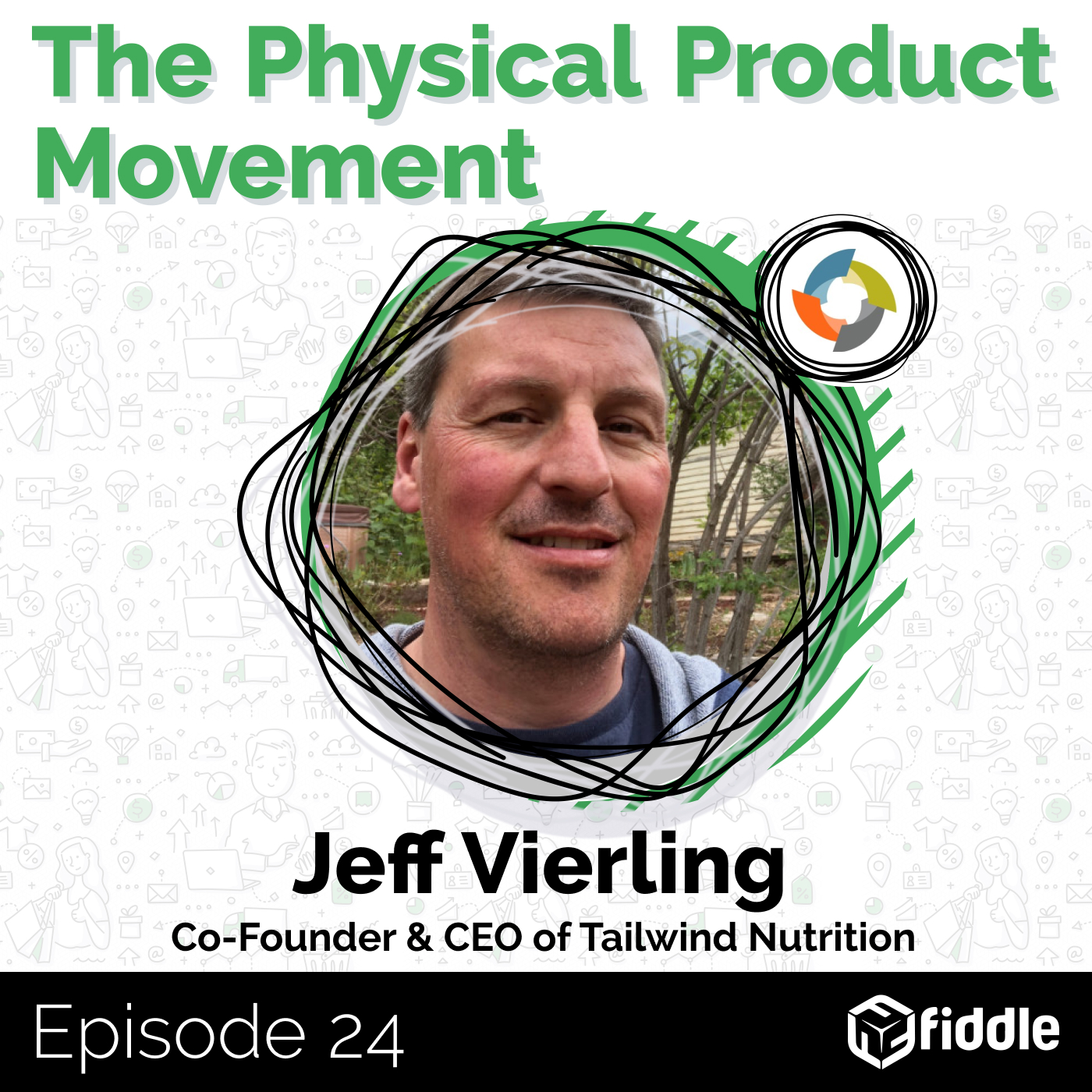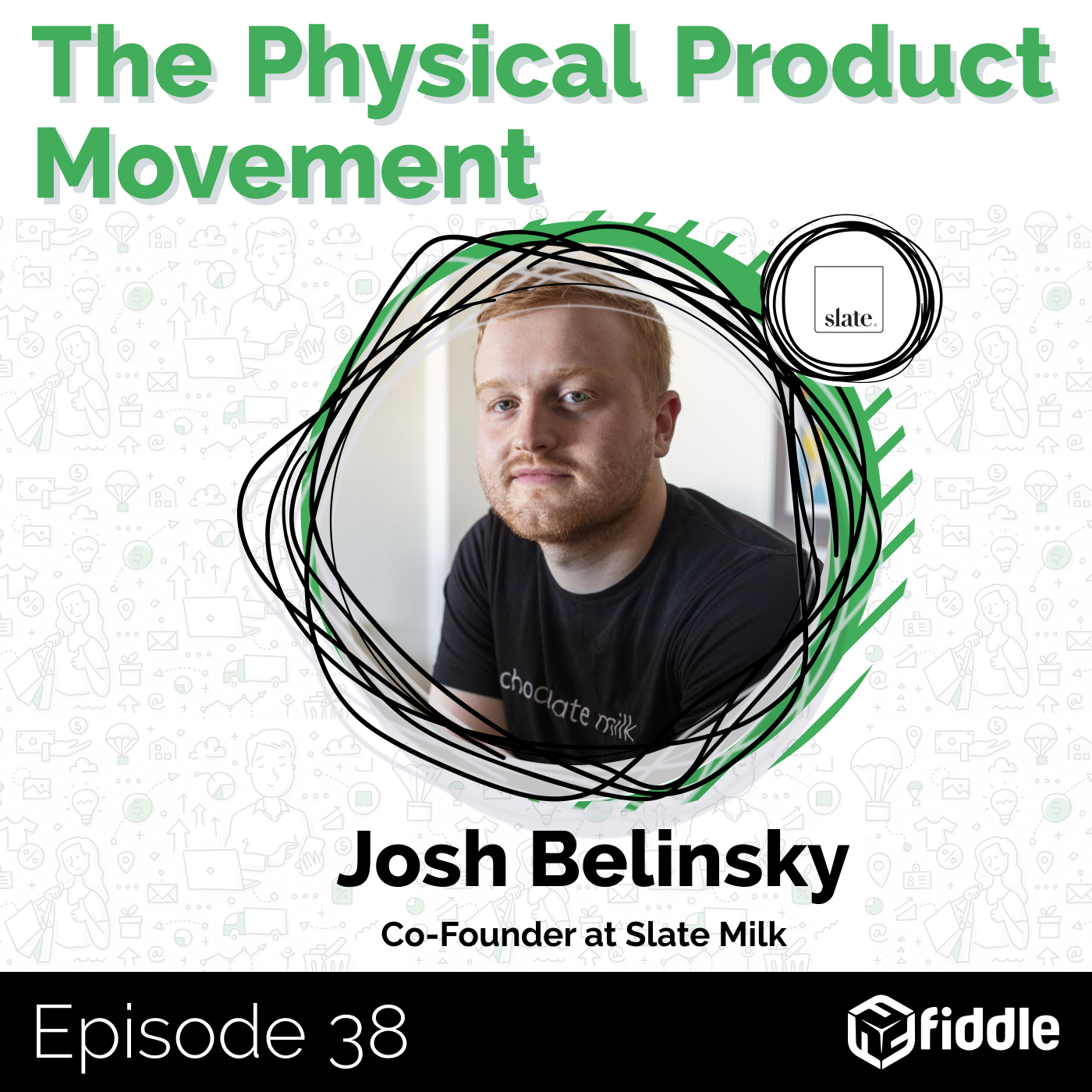In this episode, Taylor Howe introduced Morgan Gilliam, Co-founder and COO of Fiddle, for this special part of their webinar.
During this workshop, Morgan talked about traceability across batches, tracking all orders, recipe and bill of material tracking, supplier pricing and lead times, production runs and reorder point best practices.
Morgan shared some awesome new tips and strategies that will help you improve your inventory management.
Listen on Apple Podcasts here or Spotify here.
Transcript
Ken Ojuka: Welcome to the Physical Product Movement, a podcast by Fiddle, we share stories of the world’s most ambitious and exciting physical product brands to help you capitalize on the monumental change in how, why and where consumers buy. I’m your host, Ken Ojuka.
Taylor Howe: Hey, this is Taylor Howe. Again from team Fiddle. We have a very special episode for today’s podcast. It’s the audio portion from a workshop presentation called Inventory Management and Operations for Growing CPG Brands. It’s a presentation by Fiddle Co-founder and COO Morgan Gilliam, and he gave it in August of 2021. He talks about the importance of traceability across batches tracking all orders from multiple channels. Recipe and bill of material tracking, supplier pricing and lead times production runs reorder point best practices, and a lot more as a side note, if you want to watch the full presentation so you can see the slides, Morgan is referencing. We’ll link to that in the show notes. I hope you get some awesome new tips or strategies that will help you improve your inventory management. Enjoy!
Morgan Gilliam: Okay guys, welcome to the Fiddle Webinar on Inventory and Operations Management for CPG Brands. I’m Morgan, I’m one of the Co-founders here over at Fiddle.
Morgan Gilliam: We’re excited to have you guys on today for this webinar. And so today we’re actually gonna take a little different approach. A lot of webinars that we’ve attended, that I imagine some of you have attended and they go into really defining inventory and looking into the different ways of tracking inventory.
Morgan Gilliam: But we will, we want to kind of come at it from a CPG brand standpoint and really focus on the keys to success, as well as some of the pain points that we see. So many brands are running into. The things that we’re going to hit on today, really come down into the overview of a brand growing, trying to get into other channels trying to really nail their margins, track their costs.
Morgan Gilliam: And so we have this nice graph here. That kind of looks into production. We are going to assume that most everybody attending, as part of the process and making their product with a co-packer in-house, and it’s not just. Buying the final finished good from overseas and sending it to a 3PL. Okay, so in this specific webinar about inventory management for CPG brands, we really will go into tracking your own raw goods and packaging to send over to your co-packer or to bring in house to your own production. And how your landed costs come into play as well as tracking inventories at multiple locations during this time and set in reorder points.
Morgan Gilliam: And so this is just a nice kind of graph to reference the different parts of the process when trying to nail your operations for your CPG brand. And so the items that we really will go into today, Our product costs in it at each level of the process. We run into so many startups, so many growing brands, one to two to 3 million that aren’t really accounting for landed costs that are missing some of those fees that come into to determine your margins.
Morgan Gilliam: With that said we’ll get into lot tracking, batch tracking expiration dates because in the CPG world, the Food and Beverage. Pet Food, Beauty and Wellness. We really need to understand when our items are going to expire, especially the raw materials as well as the finished goods.
Morgan Gilliam: And then we’ll get into kind of the supplier management and relationships and understanding that in the world we live in with COVID and supply chain issues, it’s imperative to have backup plans. Four ingredients, four pack Jean maybe not so much your co-packer, but definitely some options second and third when streamlining that process and then we’ll get into attracting multiple channels.
Morgan Gilliam: And when is the right time? To move if you’re just on Amazon or just selling in Shopify to move to a fair marketplace or to go brick and mortar. And these are some of the things that we’re going to dive into a little more during this webinar, we’re actually going to keep it pretty short today.
Morgan Gilliam: It’ll be about 10, 15 minutes. We’ll open it up to some Q and A. And happy to chat offline afterwards with anybody that has more questions. And just to give you a bit of background Fiddle software is about five years old. The company itself is about three years old and we really understand the modern CPG brand, Co-packing and contract manufacturing.
Morgan Gilliam: We’ll go ahead and talk a little about statistics and the SMB world. 43% of brands and retail are not tracking inventory closely, or just doing manual spreadsheets and spreadsheets are great. So start off right there. You can manipulate them. You can change things out, you can get your systems in place.
Morgan Gilliam: And so it’s just a great tool. The problem comes when the complexity increases. You need to automate purchase orders, you need to look into lots, you need to track production and know everything and your bill of materials and recipes that you need to source. The spreadsheets become a burden and the manual entry has just increased significantly.
Morgan Gilliam: And then a lot of times the accuracy is just off. Spreadsheets are hard to integrate with things and keep that data updated if it’s coming, if orders are coming in from multiple channels, if you have inventory sitting multiple 3PLs at a co-packer at a warehouse. We like to ask in the beginning to brands, when we’re talking to him and doing a needs audit or learning about them, if we were to say, could you tell us in real time, what you have an inventory for a raw material, a packaging component, your products and even some of the bundles without having to reach out to a partner at a 3PL or a co-packer or if you had that insight and that data in your own. Software database or spreadsheet and how accurate really is it? And these brands that are accurate and have a good understanding of inventory at each level are going to be the ones that win and succeed.
Morgan Gilliam: So landed cost. This one hits home for me, a previous business, about 15 years ago, we weren’t great at tracking that at cost. We just talked to a beauty wellness company here recently, and they’re only about a year and a half old and she kicked it off for herself. She sourced from overseas, had a co-packer, and assembled the products.
Morgan Gilliam: And she was just adding the freight and customs and taxes and fees in as a line item and expenses and an accounting software. And so she really wasn’t putting that into the actual, the COGS, the cost of that product. And as we all know right now, margins have to be good and customs and shipping are a huge expense, especially with things skyrocketing in the last six months when bringing them home from overseas. And so she was spending money on marketing and incentives through Instagram and other partner programs. And the thing that came into play after nine months of thinking she had 60, 70% margins is after all the fees were dialed in she really only had 20 to 22%. And this really hurt her because she thought she was making money and had money to spend on marketing and unfortunately she didn’t like that her margins were off and she wasn’t profitable at the end when she thought she had been. And so when you send that first PO out to a supplier it’s just going to have your price per line item. It could be a tolling fee or it could be the actual price for that product or that material. Now the customs, the freight, the shipping is going to come in after the fact. And so a lot of times, if we’re doing manual POS in an Excel spreadsheet, Google. It’s hard to get those fees dialed in and to run reports, to see your true COGS.
Morgan Gilliam: To see that, “Oh, Okay. My landed fully loaded cost is actually not a dollar 99, it’s 245. And I just lost 46 cents per product sold. It’s really important from the beginning to understand those margins and to make sure your dial in all the costs, and in getting that into your true landed cost.
Morgan Gilliam: And run reports to see that. Especially in the beginning, if you’re able to adjust pricing to account for this or pass it on through shipping to the customer, potentially that could help make a company more profitable. And then that way you understand your true inventory costs when you bring them all the way in to sell and to produce.
Morgan Gilliam: Production costs. There’s even more that goes into production costs. And we are seeing more and more contract manufacturers and co-packers are being established just as on this almost the same rate as brands are coming out and finding niche categories. So, during COVID it just increased significantly.
Morgan Gilliam: So many more brands came out and sold online and were working with co-packers. And I think there’s something like a 13% increase and small to medium sized warehouses for co-packers and 3PLs. And what they’re saying is, Hey, We can do smaller runs. We can help the startups, we can help these brands. But with that said, you just have to understand that if you’re going to source your raw goods, your packaging, your labels, and send it to a co-packer. And then have them go ahead and do all the toll lanes and the packaging, and then ship it off to a 3PL when they’re done. If you’re doing small runs more often, it’s really important to straighten away what’s left over.
Morgan Gilliam: And if it’s really on demand, co-packing, then you’re going to have to reorder almost everything and get it back over there for the next production run. And the hard thing is at first, you may have two or three months in between each run and it’s not a big deal, but as your sales increase and you grow quickly, those runs are going to shorten and you’re just going to have that source sourced from your suppliers dial. And so when you bring that price in from overseas, it might be a label. It might be some wrong ingredients. You have to understand that you need the landing costs for that.
Morgan Gilliam: And then you need your tolling fee at the co-packer and then you need to roll that in as your costs for that good. And then as you learn, the timelines from your suppliers and packaging vendors that you can start setting reorder points, and so when you go through a production run and deplete all your goods that went into it, Then you can get notifications on when it’s time to reorder each item for the next front.
Morgan Gilliam: And again, when you do that in spreadsheets, there’s no way to set reorder points and notifications and a software that understands this complexity as you’re scaling and growing, we’ll help you dial. And also it gives you a check and balance for your co-packer. If you have a system that says, alright, you know, I have five raw ingredients, I have a label. I have a bottle, I have a top and you can deplete those theoretical yield, like what it should have been after producing maybe, 5,000 items. Then you can kind of say, Hey, this is what should’ve been left over. And you know, it might have a two, three, 5% loss in there somewhere.
Morgan Gilliam: Scrap waste. And then when your co-packer comes back to you and sit and shows you, Hey, after that run, this is what we show is left for the next run and you can compare that. And so if you don’t have that data and you don’t track it yourself, then you’re just trusting the co-packer is very efficient and has your brand in their interest to produce right.
Morgan Gilliam: And not waste or scrapped or use products for other clients so that has a really good thing to think of when you are partnering with co-packers is to have your own insight to check how the run went. Hope. That makes sense. If there’s any questions, feel free just to shoot them over. And we can get to them now.
Morgan Gilliam: Lot tracking expiration dates are interesting in the CPG world, especially food and beverage. When you go to a big box store and you go to some kind of supply, like the chains, the store chains, they’re going to want to know that you have recall and compliance docs in place, especially if you get some certifications, you want to be organic.
Morgan Gilliam: You want to be gluten free. You want to have the certifications. So you can sell into specific niches. It’s important that you’re tracking all that. And having a tool that helps you generate any kind of production documents, helps you track certificates of analysis, helps you create lot numbers. And when you receive items, it just takes a lot of the burden of having to do it yourself in spreadsheets. We’ll give you some averages across a lot. And we’ll let you know expiration dates. And so it’s a nice tool that as you’re growing and scaling and adding multiple channels to adopt.
Morgan Gilliam: So let’s say you’re rolling out a protein bar and you’re gonna sell it on Shopify. Right out the gate, your co-packer is going to maybe assign the lot. You don’t necessarily need to have tons and tons of automation built into that. But as you take on a second channel marketplace and in-store sales it’s really important to have all that in that you control.
Morgan Gilliam: That you can have insight into it in case anything happens, contamination, wrong ingredients, nuts get mixed into an item you say it’s like allergen free. Then you can have control of recall and look into all that and keep your brand safe and brand valuable by the customers you’re selling it to.
Morgan Gilliam: I hope that all makes sense. One other thing that we like to tap into for CPG brands and managing inventory and understanding your costs is a supplier relationship. Lead times come into play quite a bit, especially now with the headaches of supply chain, the price breakdown by tier in the beginning, when you need really low MOQs, it’s nice to find suppliers that will provide that.
Morgan Gilliam: Inevitably you’re going to have to overbuy occasionally on certain items to get enough in for production run. And so having a system that helps you track that and kind of give you insight into those numbers is the key to success, and again, we’re talking about CPG brands that are involved in the manufacturing, production in some aspect, as well in batch tracking to grow their brand.
Morgan Gilliam: So that you can have those things checked off. So when you go to Costco, Sam’s, Target, the chains and Whole Foods and others like this, you have everything that they want to see that you’re a great brand to work with. And also as you’re selling online that you’re providing products and you’ve checked to make sure everything is kosher and good to sell. And having insights into supplier lead times, their MOQs, tier breakdown is just a great tool to help you be successful in scale? And then when you order from set suppliers, are they actually fulfilling and sending things on time, when they said they would? Because that helps you dial in your lead time and your production runs. A company that just went public actually, Triggered Grills has a great supply chain solution where they were able to nail their process and create a flow that helped them scale.
Morgan Gilliam: Just through the roof and not having to hold on to tons and tons of inventory, which when you hold on to inventory, that’s just literally cash sitting on the shelves. And a great example of a bigger company that’s been really successful. So moving on to sales channels, if you’re selling just one channel, it’s actually usually pretty easy to track that channel. Now, as you’re adding the marketplaces, there’s tons of food, beverage, beauty, and wellness, different marketplaces coming up that you can sell on to get your brand out there and increase revenue.
Morgan Gilliam: D2C. Amazon, as well as brick and mortar and distributors. And so you want to bring that into a central location, if you try to track it all through Shopify, it’s going to be really tough, even though Shopify is phenomenal and has great tools to plug into Walmart, to Etsy, to eBay, to others to bring that in.
Morgan Gilliam: So as soon as you add a distributor, as soon as you add a chain, it’s going to be really hard to say, Hey, I saw 500 orders on Shopify this week and I had these pallets go out, where am I hitting my reorder point? So I need to produce, so bringing that all into one place, one central location so that you can look into when I need to produce, what’s my burn rate? Do I have safety stock and these things that ultimately if you run out of stock on Amazon, you’re going to be deemed significantly. If you run out of stock for a store or Shopify, it’s going to hurt your brand and your relationship with that seller.
Morgan Gilliam: Making sure that you are tracking those sales. And if you have a great product and you have a great brand, those sales are going to increase very rapidly and you just need to have the kind of things set in place that you can handle that growth. So going on to some of the things that we went over, key success to success, having the systems in place, having the data to be able to present will always help you raise money and connect with capital, and find that funding to grow your business, having insights at your co-packer at your 3PL in your own database and your own software just helps gives you that reassurance and the real time information to set reorder points, to send more items over to your 3PL to make sure you don’t run out of stock instead of waiting on those partners to update. And then lead times, if you can bring down the lead times and have a short production, ordering, sourcing production timeline, then you don’t actually have to spend as much money upfront to buy a bolt. You can produce more often and you don’t have as much inventory in stock.
Morgan Gilliam: That’s going to hurt your cash flow. So dial-in that supply chain is huge. Understanding accuracy again at all locations in COGS, it’s just going to set you up for success. And there’s a lot of moving parts and we understand that. And so that’s one of the reasons Fiddle exists today is the modern CPG brand that is working with co-packers, that’s working with suppliers as well as the 3PL and distributors needs a modern tool that they can roll up quickly, and get value from straight away. And so, you know, we connect with some of the best, softwares in the space and we’re excited just about the future of helping CPG brands grow and scale the business.
Morgan Gilliam: So that’s the webinar today. I hope it was helpful to see just the items that you need to nail. To be successful. We talk to brands every day, all day about their pain points and inevitably it starts within spreadsheets, just not having the insight and the data available to make the right decisions at the right time.
Morgan Gilliam: So if anybody has any questions, feel free to chat with them, let us know. And if not, we’ll go ahead and take this recording and put it up on our website so you can reference it. And feel free to reach out to us.
Ken Ojuka: The Physical Product Movement podcast is brought to you by Fiddle to find out more about Fiddle and how our industry leading inventory ops platform is giving modern brands and manufacturers full visibility into their inventory and operations. Visit fiddle.io, and then make sure to search for Physical Product Movement in Apple Podcasts, Spotify, Google Podcasts, or anywhere else podcasts are found. Make sure to click subscribe. So you don’t miss any future episodes on behalf of the team here at Fiddle. Thanks for listening.

